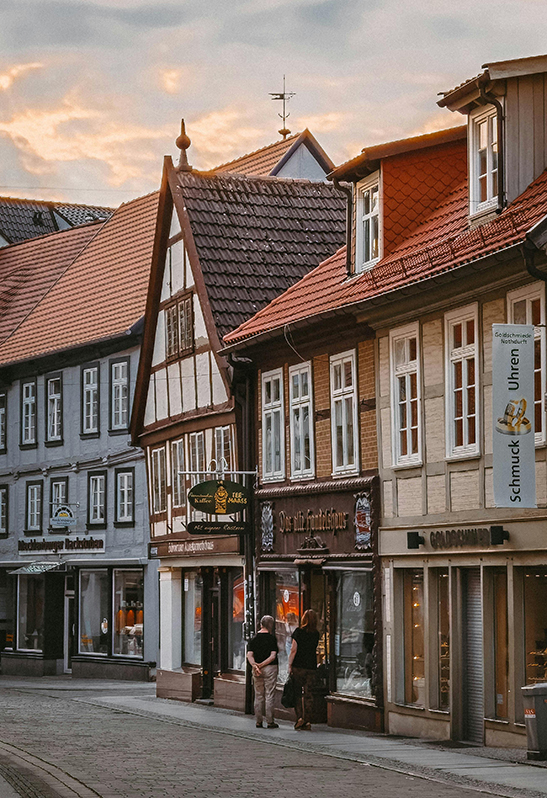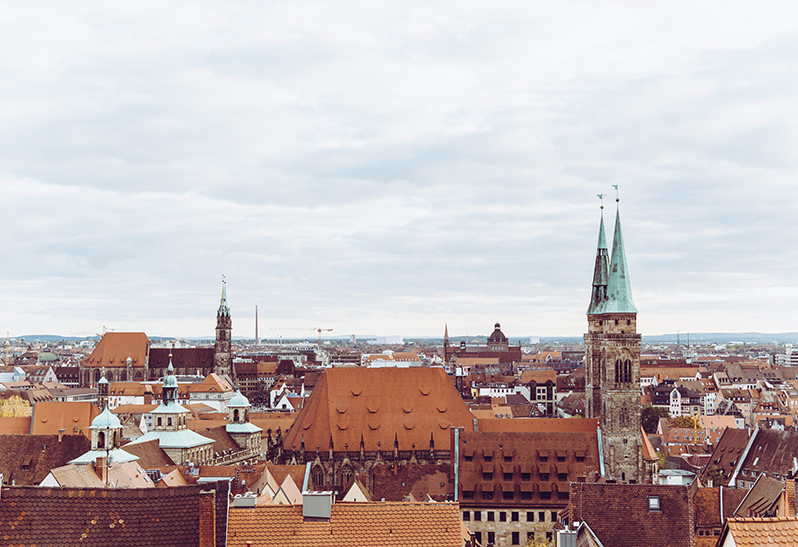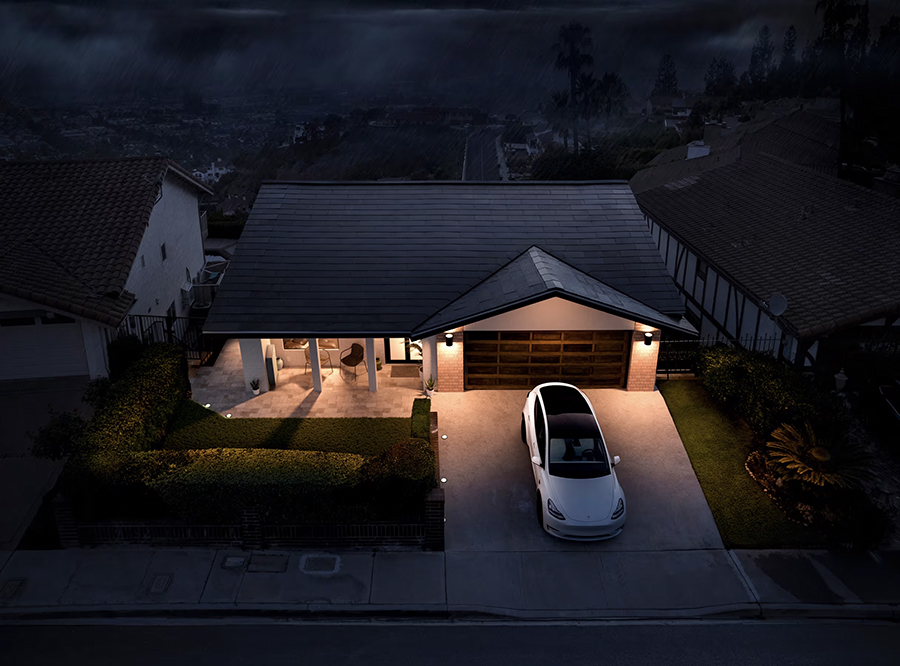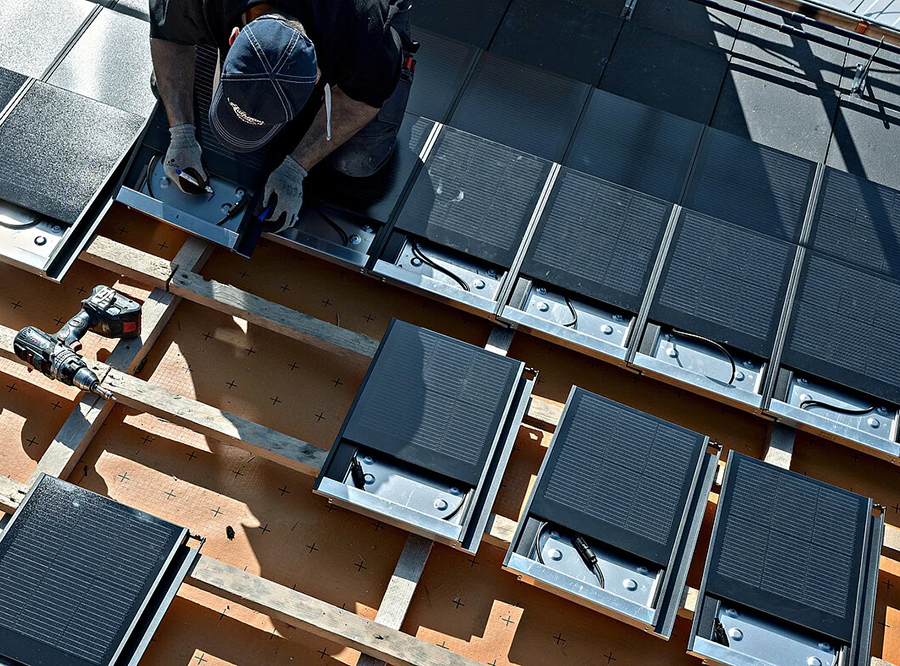Heritage and environmental protection under one roof
The relationship between listed buildings and photovoltaics is often a tricky one. Solar roof tiles with a historic look provide green energy without interfering too much with the appearance of the listed building.
There is no shortage of listed buildings in the medieval old town of Wasserburg am Inn. The Bavarian town close to the Austrian border is expanding its system of photovoltaics, including in the old town, to prepare for the energy transition. A specially developed PV traffic light system makes clear what can be carried out in accordance with heritage protection regulations. This is an idea which is being met with approval in the region and beyond.

There are almost 600,000 listed buildings in Germany, many of which are well over 100 years old, but although the architecture may be lovely to look at, it is slowing down the energy transition in the construction industry. Despite needing to preserve their historic appearance, many buildings require modernization in terms of environmental performance. Installing a PV system on the roof would drastically impact the overall visual harmony. Even more restricting are the stringent regulations laid out in the Building Code (BauGB) and the Heritage Protection Acts (DSchG) of the respective federal states. On top of this are the European directives, not to mention the various municipal and regional criteria and specifications.

Time for a new approach
The amendment of the Renewable Energy Sources Act (EEG) in 2023 resulted in an about-face in the field of photovoltaics. Nevertheless, this topic remains somewhat of a challenge. But what if the PV system could look like the roof itself? Companies in Italy, the USA and Germany have found the solution: solar roof tiles. They represent a visual alternative to conventional PV systems.
There are numerous historic houses with iconic terracotta tile roofs all throughout Italy. The Italian family-run company Dyaqua has created a skillful optical illusion with “Invisible Solar”: roof tiles that look like terracotta, but which are made from a translucent polymer mass applied to solar panels. “The tiles can also be made to look like stone, wood or concrete,” said the Company. “Our tiles are therefore not only suitable for roofs, but also for walls and floors.” However, they won’t solve the problem with listed buildings in Germany, as they are currently only produced painstakingly by hand upon request. A large American company has turned to a more inexpensive and state-of-the-art alternative.
Elon Musk & a leaky roof
Tesla wanted to set another milestone in 2016. Besides their iconic electric cars, the company also introduced PV systems and energy storage solutions. In order to do so, Tesla bought the competitor SolarCity—for a cool 2.6 billion dollars—and thereby put in place the last piece of the puzzle in the Tesla solar ecosystem: the solar roof. The flat, dark roof panels provide around 72 watts of power per “tile” thanks to their integrated PV cells. A 50 m² solar roof should therefore provide enough power for a multi-person private household—or so the company claims. However, Musk has not yet been able to live up to this promise and there has been silence around the sales launch announced many years ago and which has been postponed many times. There are also delivery problems and waves of cancellations in the USA, which are currently destabilizing Tesla’s entire solar segment.
Is Tesla being overtaken by the competition for once? And, what’s more, competition from Germany? For there is an engineer from the Rhineland who isn’t willing to let the global giant have it all its own way.


His solar roof tiles not only achieve comparable yield values to a conventional PV system, but they also solve a well-known problem with conventional PV systems in that their efficiency decreases as the heat from the sun increases. The air cooling system of the solar roof tiles cools the modules and directs the heated air to a heat pump. “We are therefore able to utilize all the light which shines onto the roof and ensure that nothing goes to waste,” stated Peter Harkenberg in a TV report. In cooperation with the Cologne University of Applied Sciences, the hybrid roof tile prototypes have been put through their paces over many years—until the Swiss solar company Meyer Burger secured the rights to them. The premium solar roof tiles are expected to come onto the market in 2024 and, thanks to their appearance, they also blend in seamlessly with historic roofs.
Preserving an historic appearance with modern technology
We live in changing times, including in how we protect our cultural heritage. Despite the pressure to preserve the historic, we also need to afford greater protection to the environment. Solar roof tiles are an innovative alternative for producing green energy, while ensuring the visual harmony of listed buildings is retained. However, solar roof tiles are not just a useful, if currently costly, renovation solution to improving the environmental performance of historic buildings. They are also particularly beneficial when installed on new private buildings where the roof has not yet been covered. As the cost for replacing the tiles affects amortization, conventional systems are currently still cheaper. However, when it comes to power, the solar roof tiles are truly impressive, meaning you can’t help but see them in a good light—if you look closely.

